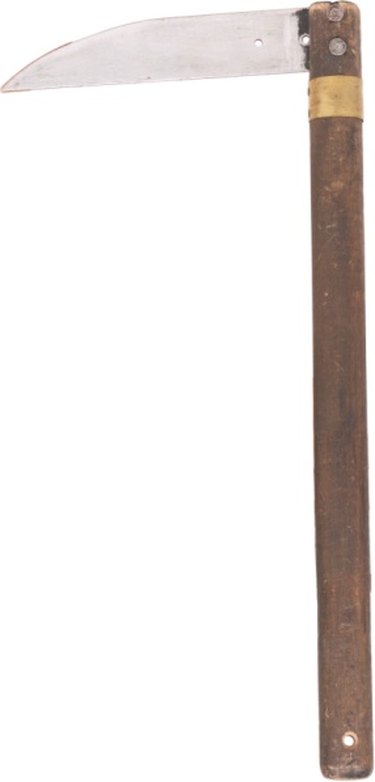
Renaissance craftspeople obviously didn't have power tools and the design of tools has improved considerably, but if a modern craftsperson looked into the toolbox of their medieval counterpart, they would recognize most of the tools and know their purpose. Many basic tools, such as hammers, chisels, axes and saws, haven't changed much.
Stone Work
Video of the Day
The primary stone working tools would be familiar to modern masons. A variety of hammers and chisels were used to shape the stone and trowels were used to spread mortars. Stone was much more difficult to move before the invention of motors though. Wheelbarrows, carts drawn by men or animals and baskets were used to haul stone. Frequently a system of pulleys were used to lift stone to heights. Levels at the time included a line which would hang down the wall. If the level was flat the line would match up to marks drawn with a straight edge.
Video of the Day
Carpenters
The tools used by medieval carpenters were very similar to those used by carpenters in ages before and since. Saws, hatchets and axes were used to cut wood. Chisels and gouges were used for finer cutting and shaping. Augers, gimlets and braces were all used to bore fine holes. Mallets were used to insert wooden pegs into the holes, and hammers were used to drive iron nails.
Blacksmith
The greatest variety of tools among medieval craftspeople probably belonged to the blacksmith. Anvils were used as a platform to hammer and shape metal. Bellows were used to keep the fires hot and tongs were used to put things into or take things out of the fire. The blacksmith had a variety of hammers in different shapes and sizes for various purposes, including sledgehammers. Swages were tools with a variety of shapes and grooves made for imprinting on the metal; the swage would be placed on top of a hot piece of metal and struck with a hammer to form an impression. A swage block was used for heading bolts and for swaging large items. Punches were used for making holes in metal, and drifts were used for shaping holes. Bits also were used for making holes. Auger bits were bits with a cutting edge. Molds also were in common use for making items, especially arrowheads, spear tips, silverware and nails.
Farming
Farming tools didn't change much from medieval times until the invention of tractors. Wheeled ploughs, and those without wheels, were drawn by people, horses or oxen to prepare the soil. Shovels or spades were used for digging, and scythes, sickles were used for cutting corn and grains. Pitchforks were used for moving hay. Axes were used for cutting wood, and flails were used to separate grain from sheaves.